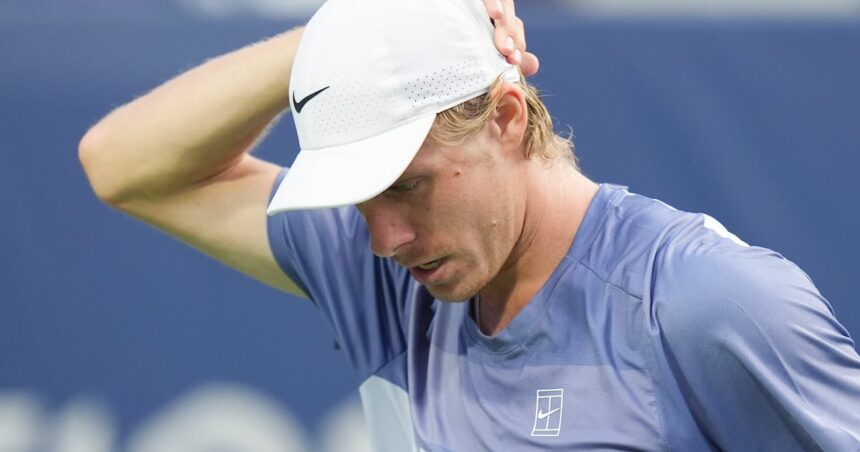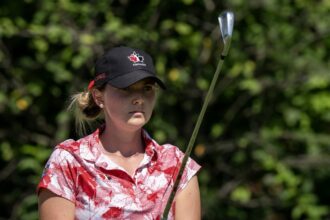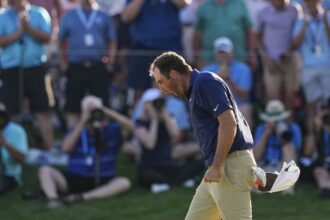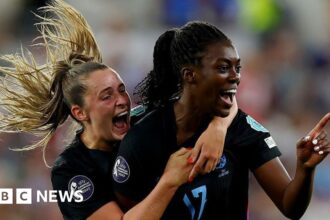In the unforgiving summer heat of Montreal yesterday, Canada’s tennis hope Denis Shapovalov saw his National Bank Open campaign come to an abrupt end, falling to American rising star Aleksandar Tien in a match that revealed as much about Shapovalov’s current struggles as it did about the shifting landscape of North American tennis.
The Richmond Hill, Ontario native, who once carried the hopes of Canadian tennis on his shoulders alongside Félix Auger-Aliassime, couldn’t find his rhythm on the hard courts where he had previously experienced career-defining moments. The straight-sets loss (6-4, 7-5) exposed the technical inconsistencies that have plagued Shapovalov since his return from injury earlier this season.
“There were moments where I felt I was finding my game,” Shapovalov told reporters afterward, his disappointment visible despite attempts to maintain composure. “But consistency has been my challenge, and today was no different.”
What makes this loss particularly poignant is the context surrounding it. Just four years ago, Shapovalov was ranked 10th in the world, his aggressive left-handed play and one-handed backhand drawing comparisons to a young McEnroe. Now, struggling to maintain his position in the top 75, each early tournament exit raises uncomfortable questions about his career trajectory.
The contrast between Shapovalov and his 19-year-old opponent couldn’t be more striking. Tien, composed beyond his years, displayed the kind of mental fortitude that tennis analysts have long argued Shapovalov lacks. Where the Canadian’s game remains brilliantly explosive but erratic, Tien showed a measured approach that reflects the evolving demands of modern tennis.
This result doesn’t exist in isolation. At 26, Shapovalov finds himself at a crucial crossroads typical of many professional athletes – too established to be considered a developing talent, yet struggling to maintain the promise of his early career. His journey parallels broader conversations in Canadian sports culture about expectation management and athletic development.
Tennis Canada’s development program has received both praise and scrutiny in recent years. While producing impressive talents like Shapovalov, Auger-Aliassime, and Bianca Andreescu, the organization faces questions about sustaining success beyond breakthrough moments. As sports psychologist Dr. Michelle Carter noted in a recent interview: “The pressure placed on young Canadian athletes to ‘arrive’ often overlooks the more challenging work of helping them sustain long-term careers.”
What makes Shapovalov’s struggles particularly fascinating from a cultural perspective is how they mirror larger trends in professional sports. The compression of athletic prime years, the mental health challenges of competing at the highest level, and the relentless public scrutiny through social media have transformed what it means to be a professional athlete in 2025.
Tournament director Karl Hale expressed disappointment at Shapovalov’s early exit but emphasized the tournament’s continued strength. “While we always hope our Canadian players advance deep into the draw, the National Bank Open continues to showcase world-class tennis,” Hale said, perhaps inadvertently highlighting the tournament’s decreasing reliance on Canadian success for relevance.
For Canadian tennis fans, Shapovalov’s loss represents another moment of recalibration. The golden generation that emerged in the late 2010s has delivered memorable moments but has yet to produce the Grand Slam singles champion that would truly transform the sport’s standing in the Canadian sports hierarchy.
As Shapovalov leaves Montreal to prepare for the upcoming Cincinnati Masters, the questions following him extend beyond technical adjustments or coaching decisions. They touch on something more fundamental: can he rediscover the joy and freedom that once made him one of tennis’s most exciting prospects? And perhaps more importantly, can Canadian tennis culture allow him the space to evolve beyond the expectations placed upon him at 18?
In a sport increasingly dominated by data analytics and mechanical perfection, Shapovalov’s artistic, high-risk approach represents something increasingly rare. His struggle to find consistency while maintaining his distinctive style reflects a broader tension in sports between expression and effectiveness.
Perhaps there’s wisdom in remembering that athletic careers rarely follow linear trajectories. For every Alcaraz-like meteoric rise, there are dozens of players whose paths include detours, setbacks, and reinventions. The question isn’t whether Shapovalov can become who we thought he would be, but rather who he might still become.










